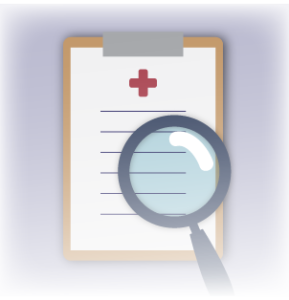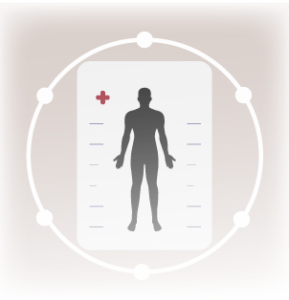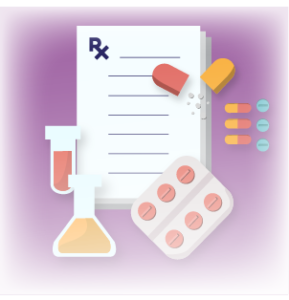Top tips:
- Treat pruritis if it is impairing quality of life or sleep.
- Identify additional contributing factors (i.e. extrahepatic biliary obstruction, non-liver causes).
- Monitor with validated itch scores.
- Non-pharmacological management should be attempted in all patients.
- If localized, consider additional topical therapies.
- If generalized, systemic treatment may be beneficial.

Check out the bottom of the page for a short video from Dr. Patel!

Confirm the diagnosis of cholestatic pruritis
- Consider the etiology of cholestasis with referral made to relevant specialties as required (e.g. Gastroenterology for extrahepatic biliary obstruction, Hepatology for primary biliary cholangitis).
- Cirrhosis related cholestasis can also cause pruritus.
- Characteristics of cholestasis associated pruritus: the intensity does not correlate with the severity of underlying liver disease; it has diurnal variation – worse itch in the late evening ; scratching often has little effect on the itch.
- Dermatological: xerosis, drug hypersensitivities, allergies, infestations, contact dermatitis
- Systemic: drug induced, uremia, hypercalcemia, hematologic malignancies- more common in Hodgkin’s lymphoma, multiple myeloma, polycythemia vera
Non-pharmacological measures should be attempted in all patients prior to considering pharmacological therapy.
Some general principles to follow:<
- Baths are better than showers (daily in lukewarm water for at least 15 minutes)
- Avoid harsh soaps, body washes, bubble baths, etc. Try gentle, lightweight cleansers (eg. Cerave, Cetaphil- both glycerin based), and only apply to limited areas such as the axilla and the groin
- Post bath: pat dry and moisturize skin within two minutes of getting out. Skin will still be damp. Ideally use hypoallergenic moisturizers with ceramides (eg. Cerave) that are free from fragrance and additives. Do not use the moisturizers on areas of broken skin.
- Topical baby oil up to three times a week has shown positive effects on itching, sleep and overall quality of life.
- Keep skin cool by wearing light and cool clothing.
- Keep skin cool by wearing light and cool clothing.
- Keep skin cool by wearing light and cool clothing.
- Avoid scratching – keep fingernails short, encourage massaging rather than scratching, wear gloves at night
- Maintain a humid home environment, especially in the winter
See: Itch Patient Handout (in Development)
- Benadryl cream, Calamine lotion, Aveeno lotion with oatmeal
- Gold Bond Medicated Anti-Itch products (OTC) – contain pramoxine, dimethicone, menthol
- Pramox HC (hydrocortisone 1%/pramoxine 1%) – apply two times a day for 4 weeks
- Can be applied 2-4 times a day to affected areas
- It may initially cause a burning sensation to the area
- Separate products that can be added to most creams, typically in the range of 0.3-1.0%
- All three may be added together, commonly with a 0.3% concentration for each, applied 1-2 times daily
Note - Antihistamines have not been systematically evaluated in cirrhosis.
They may have a non-specific anti-pruritic effect and can be useful adjunctive therapy for some patients. Given their sedating properties they should be administered at nighttime if used. They can worsen hepatic encephalopathy.
If used, hydroxyzine is used more commonly than Benadryl – start low and titrate to effect.
| Medication: | Recommended Dose | Additional information |
|---|---|---|
|
Cholestyramine |
4g PO before and after breakfast with additional doses at lunch and dinner PRN |
First line
Adverse effects: anorexia, constipation, diarrhoea, abdominal discomfort, bloating |
|
The subsequent therapies should ONLY be initiated with liver specialist guidance. They can be associated with serious side effects. Consultation should also address whether the patient may be a candidate for liver transplantation. |
||
|
Rifampicin |
150mg PO daily (titration q 2 weekly to 150-300 mg twice daily if non-response) Max: 300mg PO BID |
Second line
Adverse effects: nausea, anorexia, hemolytic anemia, thrombocytopenia, renal impairment, hepatotoxicity Monitor CBC and LFTs q2 weeks for first 2 months and monthly thereafter |
|
Naltrexone |
12.5mg PO daily (titrate by 12.5mg every 3-7 days) Max: 50mg/day |
Third line Do not use with acute hepatitis, abnormal liver enzymes or decompensated cirrhosis Adverse effects: opiate withdrawal-like reactions, reduced threshold to pain, chance of developing hepatitis Serially monitor liver enzymes and LFTs given the risk of hepatotoxicity |
|
Sertraline |
37.5-50mg PO daily
|
Fourth line (Limited evidence for use) AVOID in decompensated cirrhosis since it is metabolized by liver AVOID in patients taking monoamine oxidase inhibitors (MOA) in previous 14 days Adverse effects: bleed risk, QT prolongation Serially monitor liver enzymes and LFTs given the risk of hepatotoxicity. |
| Alternative salvage therapies (at certain specialty centres only) |
|
Fifth line (Limited Evidence for use) |
|
Liver transplantation candidacy should be considered if pruritis is |
||
This section was adapted from content using the following evidence based resources in combination with expert consensus. The presented information is not intended to replace the independent medical or professional judgment of physicians or other health care providers in the context of individual clinical circumstances to determine a patient’s care.
Authors (Alphabetical): Amanda Brisebois, Sarah Burton-Macleod, Ingrid DeKock , Martin Labrie, Noush Mirhosseini, Mino Mitri, Arpan Patel, Kinjal Patel, Aynharan Sinnarajah, Puneeta Tandon
Thank you to pharmacists Omer Ghutmy and Meghan Mior for their help with reviewing these pages.
Helpful Links:
- Goals of care: https://www.albertahealthservices.ca/frm-103547.pdf
- CKM Itchiness Patient Handout: https://www.ckmcare.com/Resources/Details/135
References:
- Davison SN on behalf of the Kidney Supportive Care Research Group. Conservative Kidney Management Pathway; Available from: https//:www.CKMcare.com.
- Bhalerao A, Mannu GS. Management of pruritus in chronic liver disease. Dermatol Res Pract. 2015;2015:295891. doi: 10.1155/2015/295891. Epub 2015 Mar 10. PMID: 25861254; PMCID: PMC4377431.
- Bunchorntavakul C, Reddy KR. Pruritus in chronic cholestatic liver disease. Clin Liver Dis. 2012 May;16(2):331-46. doi: 10.1016/j.cld.2012.03.010. PMID: 22541702.
- Düll MM, Kremer AE. Treatment of Pruritus Secondary to Liver Disease. Curr Gastroenterol Rep. 2019 Jul 31;21(9):48. doi: 10.1007/s11894-019-0713-6. PMID: 31367993.
- European Association for the Study of the Liver. Electronic address: [email protected]; European Association for the Study of the Liver. EASL Clinical Practice Guidelines: The diagnosis and management of patients with primary biliary cholangitis. J Hepatol. 2017 Jul;67(1):145-172. doi: 10.1016/j.jhep.2017.03.022. Epub 2017 Apr 18. PMID: 28427765.
- Siemens W, Xander C, Meerpohl JJ, Buroh S, Antes G, Schwarzer G, Becker G. Pharmacological interventions for pruritus in adult palliative care patients. Cochrane Database Syst Rev. 2016 Nov 16;11(11):CD008320. doi: 10.1002/14651858.CD008320.pub3. PMID: 27849111; PMCID: PMC6734122.
We gratefully acknowledge the Physician Learning Program for their design assistance.






